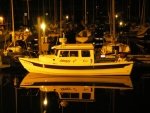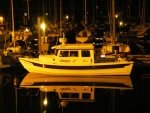In a recent thread about freezers and the 50qt ARB unit, Sunbeam said it was drawing 25-35 amp hours per day. In the same thread Bob posted the following,
"We find that 30 amp hours is a good average for our dometics over a 24 hour period. We use one as a freezer and the other as a refrigerator. We use about 30 amps each 12 hours"
In my own testing, I am finding we can create and maintain ice with our Engle freezer using 30amp hours per day.
Boris is using more power due to the draw of the built-in refer on the 25 but based on experience of others and my own, I think saying anything under 60 amp hours is suspicious is missing the facts.
Based on some real use by some of us Brats, it looks like that number would be closer to 30.
Bob, did your units really double their draw from 30-60ah each from one trip to another? That seems like a pretty big jump.
Greg
"We find that 30 amp hours is a good average for our dometics over a 24 hour period. We use one as a freezer and the other as a refrigerator. We use about 30 amps each 12 hours"
In my own testing, I am finding we can create and maintain ice with our Engle freezer using 30amp hours per day.
Boris is using more power due to the draw of the built-in refer on the 25 but based on experience of others and my own, I think saying anything under 60 amp hours is suspicious is missing the facts.
Based on some real use by some of us Brats, it looks like that number would be closer to 30.
Bob, did your units really double their draw from 30-60ah each from one trip to another? That seems like a pretty big jump.
Greg


